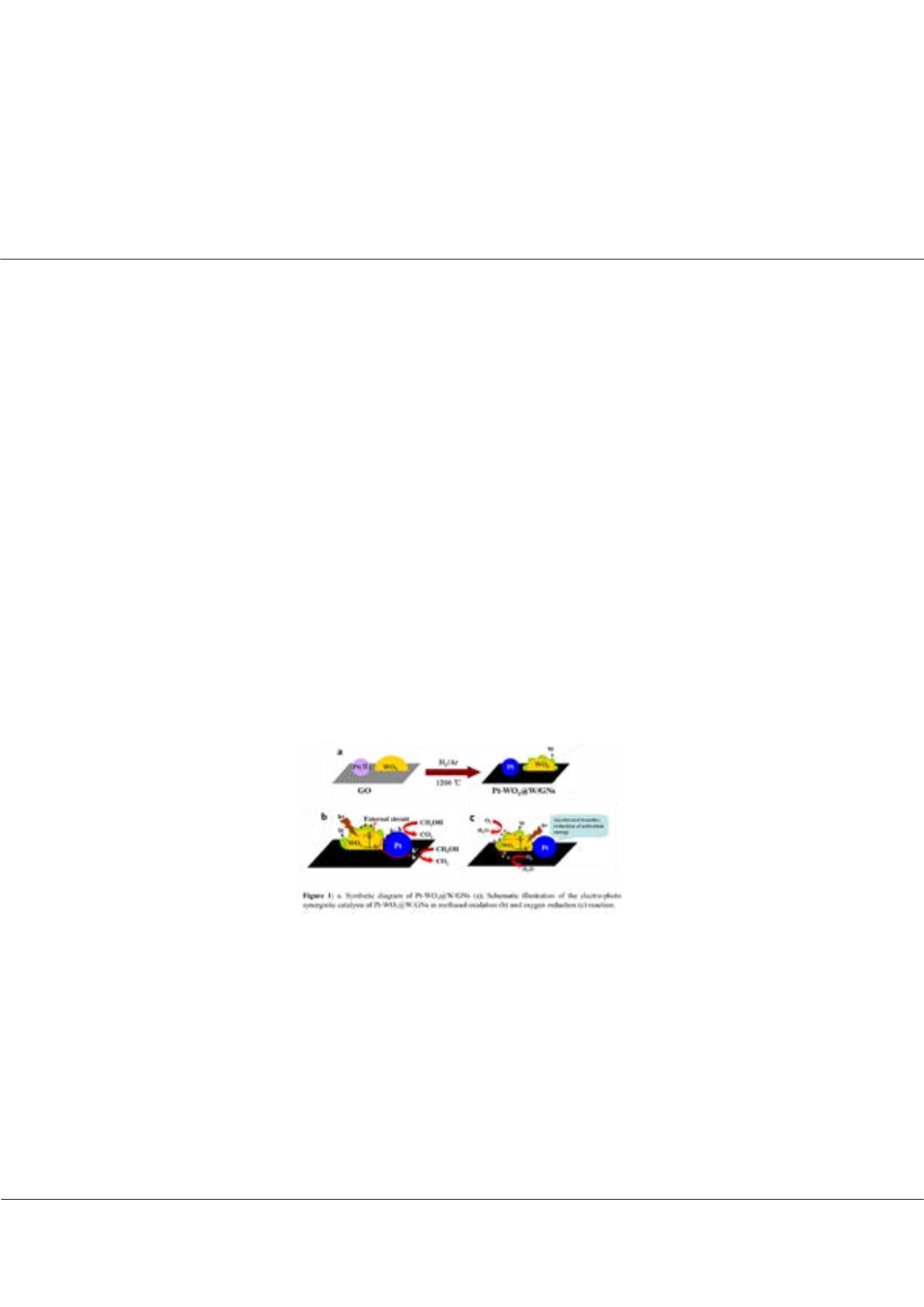

Page 94
conferenceseries
.com
Volume 6
Research & Reviews: Journal of Material Sciences
ISSN: 2321-6212
Advanced Materials 2018
September 04-06, 2018
September 04-06, 2018 | Zürich, Switzerland
21
st
International Conference on
Advanced Materials & Nanotechnology
Synthesis of Pt-WO
3
@W/GNs as a bifunctional electro-photo catalyst for catalyzing methanol
oxidation and oxygen reduction reaction
Shen Lin, Shuhong Xu
and
Zhongshui Li
Fujian Normal University, China
D
irect methanol fuel cells (DMFCs) have attracted increasing attention due to its low cost, high power density, ease of
handling, and low operating temperature. And the multifunctional electro-catalysts which can be used simultaneously in
both the anode (methanol oxidation reaction, MOR) and cathode (oxygen reduction reaction, ORR) are eagerly needed. So in
this work, a bifunctional electro-photo catalyst Pt-WO
3
@W/GNs was synthesized by high temperature solid phase synthesis
method, with two-dimensional plane structure graphene (GNs) as a support, and it was characterized by TEM, HAADF-
STEM, XRD, XPS and Raman. It is found that Pt-WO
3
@W/GNs has two forms of W at the same time, that is the metal state
(W) on the surface and the internal oxidation state (WO
3
), which is due to that only partial surface of WO
3
is reduced during
high temperature solid phase reaction. Furthermore, it is observed that its substrate GNs show an obvious wrinkle undergoing
the high temperature process, and Pt-WO
3
@W nanoparticles are evenly dispersed on the surface of GNs, with the average
particle size about 7.5 nm. Electro-catalytic properties of Pt-WO
3
@W/GNs were investigated by cyclic voltammetry (CV),
linear sweep voltammetry (LSV), chronoamperometry, and electrochemical impedance spectrum (EIS), to discuss the effect
of W oxophilic property and its different states on its catalytic properties towards MOR and ORR. The results indicate that
both W and WO
3
in Pt-WO
3
@W/GNs have a promoting effect on catalyzing MOR and ORR, resulting in a superior electro-
catalytic property than that of commercial Pt-Ru/C. Especially, the presence of some W (0) can endow semiconductor WO
3
different contact modes (Ohmic and Schottky contact) between W or Pt, which leads to a strong charge separation efficiency
under light irradiation, so an efficient electro-photo-synergistic catalytic properties towards MOR and ORR under simulated
sunlight was achieved. The founding in this work is helpful for converting solar energy into electric energy during traditional
electro-catalytic process.
Recent Publications:
1. Z. Li, S. Xu, Y. Xie, Y. Wang, S. Lin*, Promotional effects of trace Bi on its highly catalytic activity for methanol
oxidation of hollow Pt/graphene catalyst, Electrochimica Acta, 264 (2018) 53-60.
2. Z. Li, L. Ye, Y. Wang, S. Xu, F. Lei, S. Lin*, Visible light assisted electro-photo synergistic catalysis of heterostructured
Pd-Ag NPs/graphene for methanol oxidation, Rsc Advances, 6 (2016) 79533-79541..
3. Z. Li, L. Ye, F. Lei, Y. Wang, S. Xu, S. Lin*, Enhanced electro-photo synergistic catalysis of Pt (Pd)/ZnO/graphene
composite for methanol oxidation under visible light irradiation, Electrochimica Acta, 188 (2016) 450-460.
4. F. Lei, Z. Li, L. Ye, Y. Wang, S. Lin*, One-pot synthesis of Pt/SnO
2
/GNs and its electro-photo-synergistic catalysis for
methanol oxidation, International Journal of Hydrogen Energy, 41 (2016) 255-264.
5. Z. Li, F. Lei, L. Ye, X. Zhang, S. Lin*, Controlled synthesis of Pt/CS/PW
12-
GNs composite as an anodic electrocatalyst
for direct methanol fuel cells, Journal of Nanoparticle Research, 17 (2015).
Shen Lin et al., Res. Rev. J Mat. Sci. 2018, Volume 6
DOI: 10.4172/2321-6212-C3-020
















